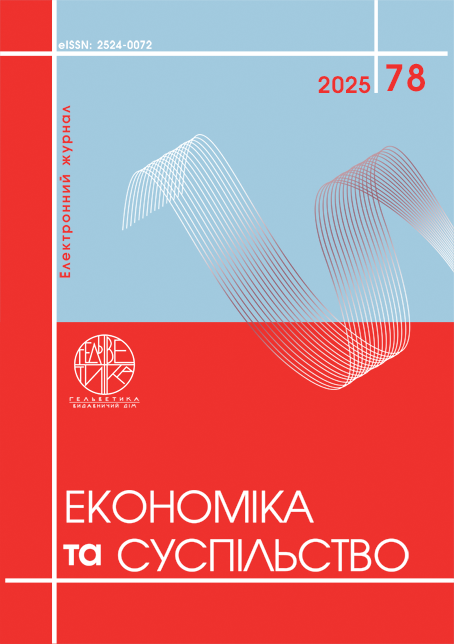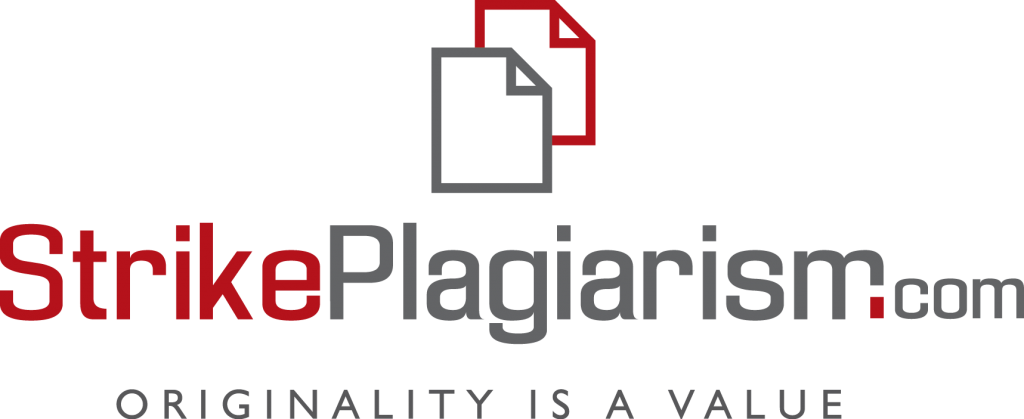BNPL AS A DEMAND-SIDE INVESTMENT INSTRUMENT FOR THE SUSTAINABLE DEVELOPMENT OF MICRO-ENTERPRISES IN UKRAINE
Abstract
This article examines investment instruments that can accelerate sustainable development of micro-enterprises in Ukraine and argues for a state-financed Buy-Now-Pay-Later (BNPL) mechanism as a demand-side investment tool. Building on institutional and behavioral economics, it explains why concessional credit and grants often yield weak or slow effects for micro-firms: they insufficiently ease demand and liquidity constraints, impose high transaction and cognitive costs, and misfit short cash-flow cycles. The study combines a review of international and Ukrainian sources with a comparative appraisal of programs and develops a two-level taxonomy: (1) legal classification of financial/investment tools; (2) functional classification by role in the micro-enterprise cycle (activating demand, smoothing working capital, renewing fixed assets, transferring risk). Within this frame the paper compares the 5-7-9% concessional lending program, national cashback, grant schemes and a public BNPL mechanism using common criteria–targeting/outreach to micro-firms, speed/liquidity impact, transaction/cognitive costs, behavioral fit, risk allocation/budget efficiency–and provides a SWOT analysis of BNPL. Findings indicate that public BNPL directly addresses core frictions by coupling immediate cash inflow to sellers with deferred household payments, expanding effective demand and smoothing cash gaps, while leveraging existing payment infrastructure and reducing screening burdens. It complements asset-oriented credit and public-good grants by mobilizing demand and working capital. With clear eligibility rules, standardized disclosure of the cost of installments, prudent assessment of repayment capacity and safeguards against over-indebtedness, BNPL achieves broad outreach and measurable effects on turnover, employment and taxes at relatively low fiscal cost. Conceptually, BNPL is treated as a financial technology that functions as an investment instrument within the micro-enterprise reproduction cycle, channeling publicly supported capital to activate demand, stabilize operating cash flows and formalize transactions–strengthening market access, financial inclusion and the resilience of Ukrainian micro-entrepreneurship during recovery.
References
Akerlof G. The Market for “Lemons”: Quality Uncertainty and the Market Mechanism. The Quarterly Journal of Economics. 1970. Vol. 84, No. 3. P. 488–500.
Stiglitz J. E., Weiss A. Credit Rationing in Markets with Imperfect Information. The American Economic Review. 1981. Vol. 71, No. 3. P. 393–410.
Beck T., Demirgüç-Kunt A., Maksimovic V. Financing Patterns Around the World: The Role of Institutions. Washington, DC: The World Bank, Development Research Group Finance, 2002.
Талер Р. Поведінкова економіка. Чому люди діють ірраціонально і як отримати з цього вигоду. 3-тє вид. Київ : Наш Формат, 2022. 464 с.
Банерджі А., Дуфло Е. Економіка бідності. Як звільнити світ від злиднів. Київ : Наш Формат, 2018. 312 с.
Інклюзивні інститути забезпечення розвитку економіки України: колективна монографія / за ред. І. М. Бобух; НАН України, ДУ «Ін-т екон. та прогнозув. НАН України». Київ, 2023. 360 с. URL: http://ief.org.ua/wp-content/uploads/2023/12/Ukraine-inclusive-institutes-economy-development.pdf (дата звернення: 08.08.2025).
Геєць В. М. Суспільство, держава, економіка: феноменологія взаємодії та розвитку. Київ : НАН України, Ін-т екон. та прогнозув., 2009. 864 с.
Структурні зміни та економічний розвиток України: монографія / за ред. Л. В. Шинкарук; НАН України, Ін-т екон. та прогнозув. Київ, 2011. 696 с.
Організація Об’єднаних Націй. Перетворення нашого світу: Порядок денний у галузі сталого розвитку на період до 2030 року: Резолюція ГА ООН 70/1 від 25.09.2015. 2015. URL: https://undocs.org/en/A/RES/70/1 (дата звернення: 08.08.2025).
Міністерство економічного розвитку і торгівлі України. Цілі сталого розвитку: Україна. Національна доповідь. Київ, 2017. 174 с.
Гаврилюк В. П. Глобалізація, «зелена» економіка – сталий розвиток. Ефективна економіка. 2015. № 4. URL: http://www.economy.nayka.com.ua/?op=1&z=3994 (дата звернення: 08.08.2025).
Центр розвитку інновацій. Стан та потреби бізнесу в Україні: результати дослідження у березні 2025 року. 22.04.2025. URL: https://business.diia.gov.ua/analytics/research/rezultaty-doslidzhennia-stanu-biznesu-v-ukraini-v-berezni-2025-roku (дата звернення: 08.08.2025).
Kyivstar Business Hub. Що з бізнесом: огляд за лютий 2025 року. 28.02.2025. URL: https://hub.kyivstar.ua/articles/shho-z-biznesom-oglyad-za-lyutij-2025-roku (дата звернення: 08.08.2025).
Національний інститут стратегічних досліджень. Проблеми розвитку малого та середнього бізнесу в Україні як основного джерела робочих місць. 17.05.2024. URL: https://niss.gov.ua/doslidzhennya/sotsialna-polityka/problemy-rozvytku-maloho-ta-serednoho-biznesu-v-ukrayini-yak (дата звернення: 08.08.2025).
Верховна Рада України. Про ринки капіталу та організовані товарні ринки: Закон України від 23.02.2006 № 3480-IV. URL: https://zakon.rada.gov.ua/go/3480-15 (дата звернення: 08.08.2025).
IASB. IAS 32 Financial Instruments: Presentation (para. 11). URL: https://www.iasplus.com/en/standards/ias/ias32 (дата звернення: 08.08.2025).
ESMA. MiFID II, Annex I (Lists of services and financial instruments). URL:https://www.esma.europa.eu/publications-and-data/interactive-single-rulebook/mifid-ii/annex-i (дата звернення: 08.08.2025).
OECD. New Approaches to SME and Entrepreneurship Financing. Paris: OECD Publishing, 2015. URL: https://www.oecd.org/content/dam/oecd/en/publications/reports/2015/10/new-approaches-to-sme-and-entrepreneurship-financing_g1g58cb9/9789264240957-en.pdf (дата звернення: 08.08.2025).
Верховна Рада України. Про споживче кредитування: Закон України від 15.11.2016 № 1734-VIII (чинна редакція). URL: https://zakon.rada.gov.ua/go/1734-19 (дата звернення: 08.08.2025).
Akerlof, G. A. (1970). The market for “lemons”: Quality uncertainty and the market mechanism. The Quarterly Journal of Economics, 84(3), 488–500.
Stiglitz, J. E., & Weiss, A. (1981). Credit rationing in markets with imperfect information. The American Economic Review, 71(3), 393–410.
Beck, T., Demirgüç-Kunt, A., & Maksimovic, V. (2002). Financing patterns around the world: The role of institutions. Washington, DC: The World Bank, Development Research Group Finance.
Thaler, R. H. (2022). Misbehaving: The making of behavioral economics (Ukr. ed.). Kyiv: Nash Format.
Banerjee, A. V., & Duflo, E. (2018). Poor economics (Ukr. ed.). Kyiv: Nash Format.
Bobukh, I. M. (Ed.). (2023). Inclusive institutions for the development of Ukraine’s economy (in Ukrainian). Kyiv: Institute for Economics and Forecasting, NAS of Ukraine. Available at: http://ief.org.ua/wp-content/uploads/2023/12/Ukraine-inclusive-institutes-economy-development.pdf (accessed August 8, 2025).
Heiets, V. M. (2009). Society, state, economy: Phenomenology of interaction and development (in Ukrainian). Kyiv: NAS of Ukraine, Institute for Economics and Forecasting.
Shynkaruk, L. V. (Ed.). (2011). Structural changes and economic development of Ukraine: Monograph (in Ukrainian). Kyiv: NAS of Ukraine, Institute for Economics and Forecasting.
United Nations General Assembly. (2015). Transforming our world: The 2030 Agenda for Sustainable Development (A/RES/70/1). Available at: https://undocs.org/en/A/RES/70/1 (accessed August 8, 2025).
Ministry of Economic Development and Trade of Ukraine. (2017). Sustainable Development Goals: Ukraine. National report (in Ukrainian). Kyiv.
Havryliuk, V. P. (2015). Globalization, “green” economy and sustainable development (in Ukrainian). Efektyvna ekonomika, (4). Available at: http://www.economy.nayka.com.ua/?op=1&z=3994 (accessed August 8, 2025).
Center for Innovation Development. (2025, April 22). Business conditions and needs in Ukraine: March 2025 survey results (in Ukrainian). Available at: https://business.diia.gov.ua/analytics/research/rezultaty-doslidzhennia-stanu-biznesu-v-ukraini-v-berezni-2025-roku (accessed August 8, 2025).
Kyivstar Business Hub. (2025, February 28). What’s up with business: February 2025 overview (in Ukrainian). Available at: https://hub.kyivstar.ua/articles/shho-z-biznesom-oglyad-za-lyutij-2025-roku (accessed August 8, 2025).
National Institute for Strategic Studies. (2024, May 17). Problems of SME development in Ukraine as the main source of jobs (in Ukrainian). Available at: https://niss.gov.ua/doslidzhennya/sotsialna-polityka/problemy-rozvytku-maloho-ta-serednoho-biznesu-v-ukrayini-yak (accessed August 8, 2025).
Verkhovna Rada of Ukraine. (2006). Law of Ukraine “On capital markets and organized commodity markets” No. 3480-IV. Available at: https://zakon.rada.gov.ua/go/3480-15 (accessed August 8, 2025).
International Accounting Standards Board (IASB). (n.d.). IAS 32 Financial Instruments: Presentation (para. 11). Available at: https://www.iasplus.com/en/standards/ias/ias32 (accessed August 8, 2025).
European Securities and Markets Authority (ESMA). (n.d.). MiFID II — Annex I: Lists of services and financial instruments. Available at: https://www.esma.europa.eu/publications-and-data/interactive-single-rulebook/mifid-ii/annex-i (accessed August 8, 2025).
OECD. (2015). New approaches to SME and entrepreneurship financing. Paris: OECD Publishing. Available at: https://www.oecd.org/content/dam/oecd/en/publications/reports/2015/10/new-approaches-to-sme-and-entrepreneurship-financing_g1g58cb9/9789264240957-en.pdf (accessed August 8, 2025).
Verkhovna Rada of Ukraine. (2016). Law of Ukraine “On consumer lending” No. 1734-VIII (current version). Available at: https://zakon.rada.gov.ua/go/1734-19 (accessed August 8, 2025).
Copyright (c) 2025 Віталій Гаврилюк, Євгеній Єлізар'єв

This work is licensed under a Creative Commons Attribution 4.0 International License.


